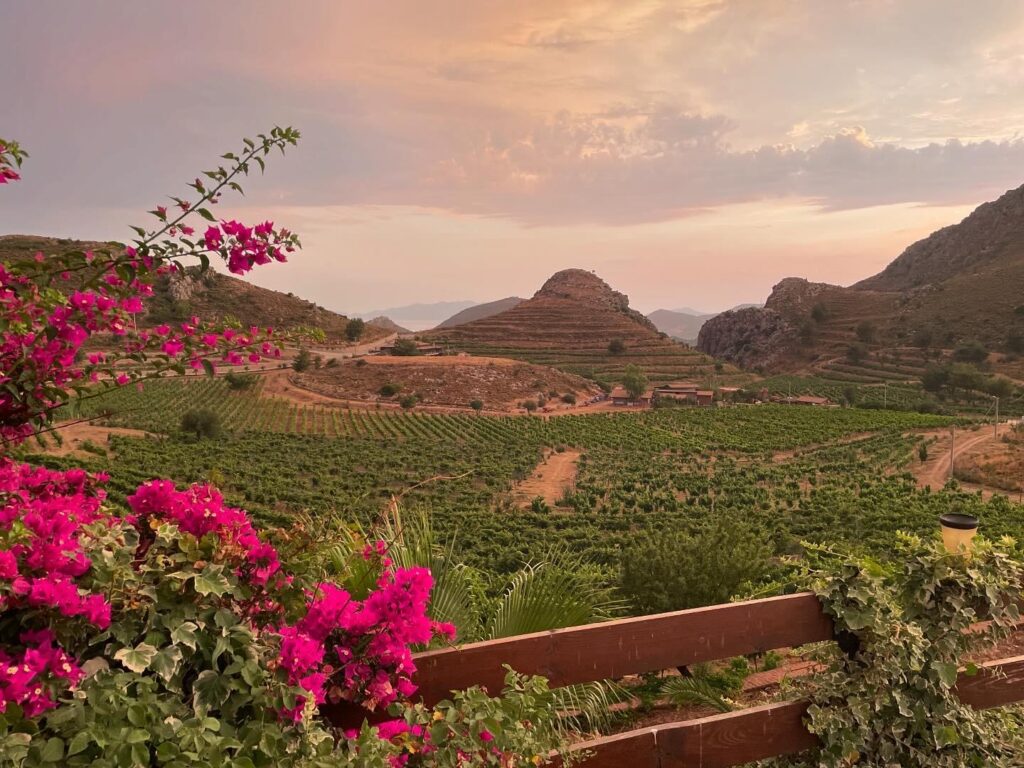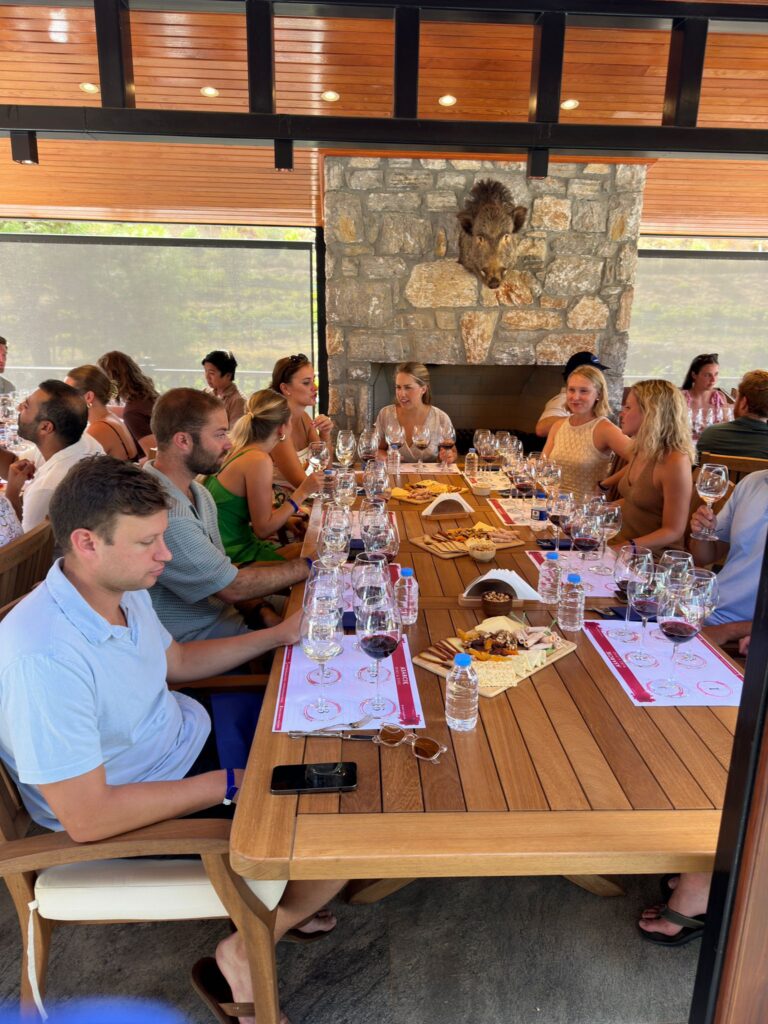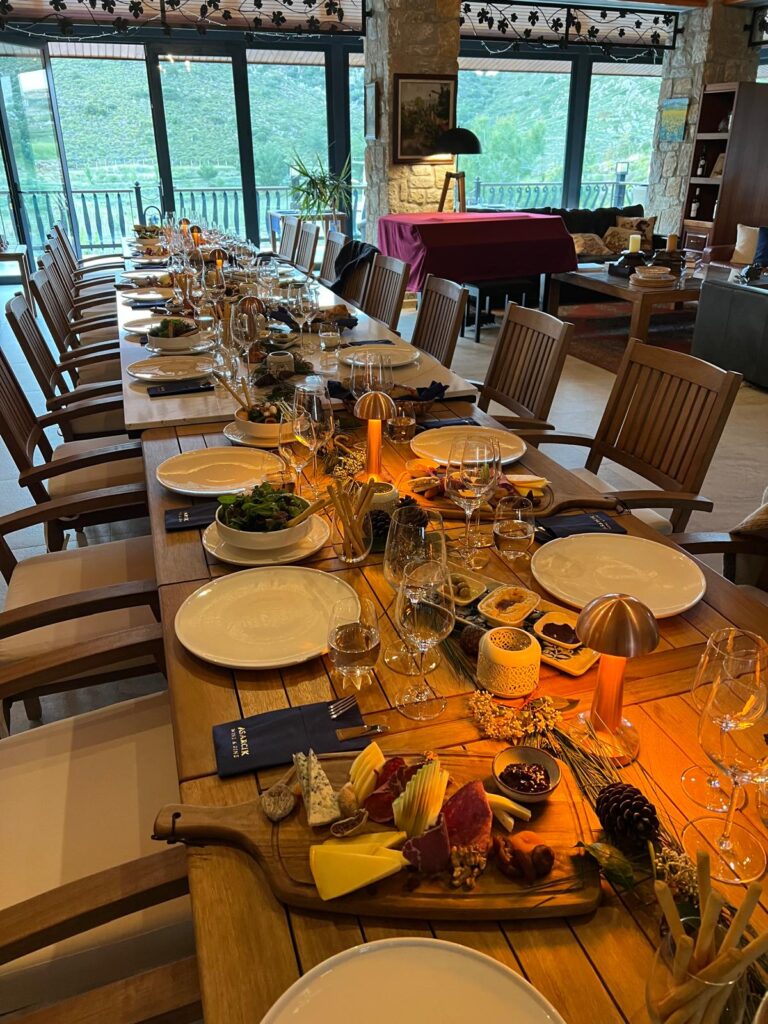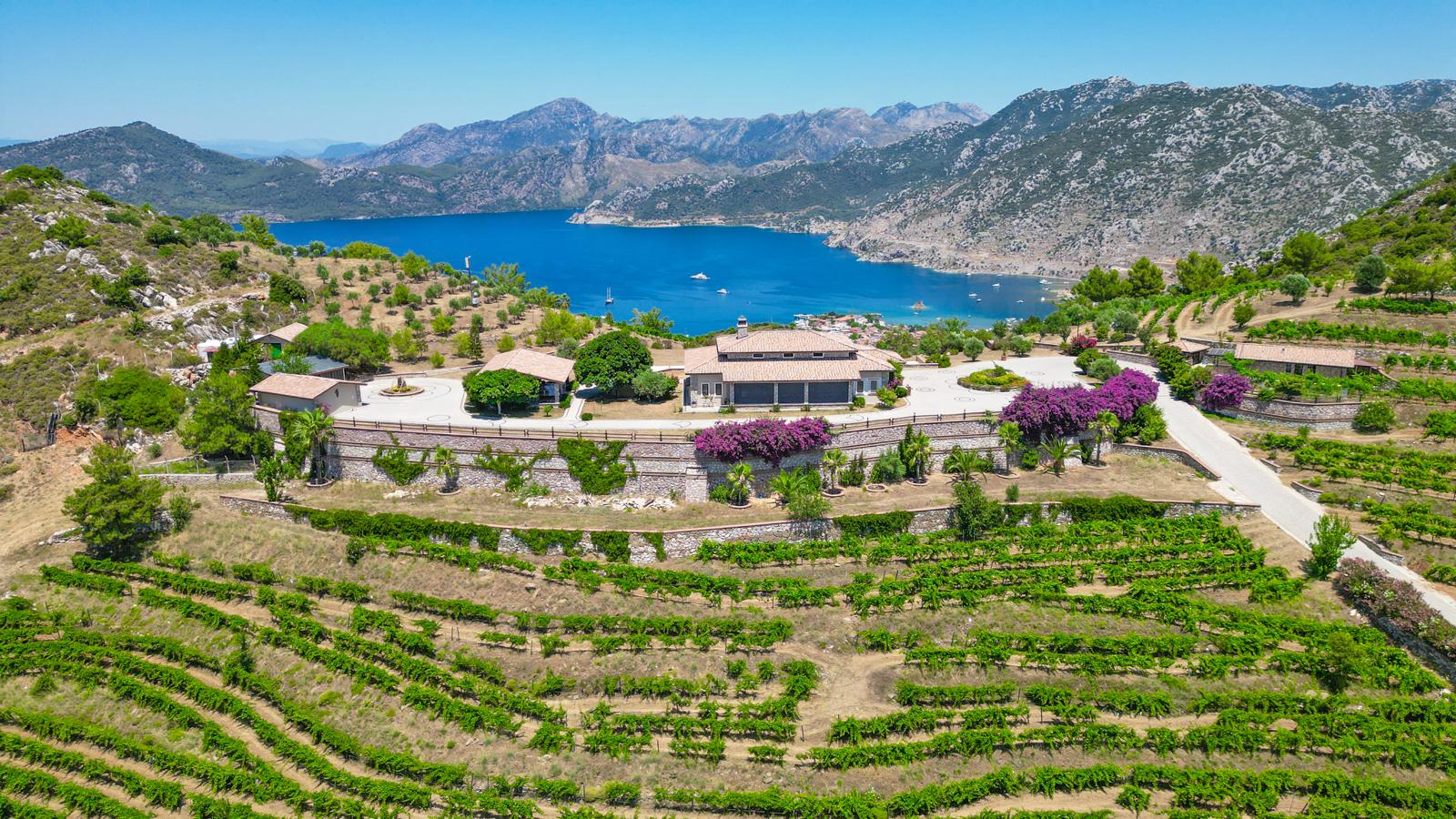In the mountains of southwestern Turkey, between the villages of Selimiye and Bozburun, a tradition interrupted for centuries is coming back to life. On these sea-breeze-swept hills, the Asarcik winery is reviving viticulture in a region where grapes were cultivated as far back as the Carian Kingdom and the Roman Empire.
Stones, Wind, and Wine: How the Turkish Winery Asarcik Revived an Ancient Tradition

Today, this organic estate produces wines that would be at home on the tables of both a fine Parisian restaurant and the courts of Constantinople. We spoke with Asarcik’s executive director, Bilgehan Parlak, about how they brought winemaking back to this Anatolian valley, which grape varieties thrive in the region’s limestone hills, why they’ve taken a firm stance against fertilisers, and whether Turkish wine is finding its place on the global wine map.
Taxes to Rhodes, Centuries of Neglect, and Modern Enthusiasts
“This valley began to develop as early as the 4th century BC,” says Parlak. “Back then, residents of the Carian Kingdom made wine here that was sent to the island of Rhodes as a form of tax.”

After the Carians came the Romans, who continued the winemaking tradition, with wine shipped off to Constantinople and the imperial court. But things changed with the rise of the Ottoman Empire: alcohol was outlawed, the vineyards were abandoned, and centuries of neglect followed—until modern-day enthusiasts came along.
When Bilgehan and his colleagues first explored the area, they noticed natural stone terraces—perfect for vineyards. A study of the local climate and soil confirmed it: the valley had a unique terroir. At 250 meters above sea level, with dramatic shifts in daytime and nighttime temperatures and constant winds, the microclimate was ideal for organic farming.
“No fertilisers, no chemicals. We are a certified organic and vegan winery. Following in the footsteps of history, we continue the tradition.”
Limited Volume for Maximum Quality
The winery produces around 30,000 bottles per year—though it could make three times as much. But at Asarcik, they “eliminate two-thirds of the yield to focus on the flavour of what remains.”
“Our fertiliser is simply the grape skins and seeds we don’t use—they go back to the soil after pressing. Quality over quantity. That’s why Michelin-starred restaurants and high-end resorts choose us. We’ve even received international awards, like those from the International Wine and Spirit Competition.”
This philosophy resonates with top chefs—Asarcik wines appear on the menus of Turkish restaurants with one and two Michelin stars. Some French and Italian chefs even make exceptions for them, including Turkish wines alongside their native selections.
“It’s a real honour. One Italian chef told us, ‘Normally I only use Italian wine, but yours deserves to be on my list.’”
Microclimate, Soil, and Italian Varietals
Asarcik takes particular pride in its Nero d’Avola, an Italian grape variety typically grown in Sicily.
“We have the same limestone soils here as in Sicily, so the grape adapted beautifully.”
They also grow white varietals Roussanne and Marsanne (originally from France’s Rhône Valley), Chardonnay, and two indigenous Turkish grapes.
“Our Roussanne-Marsanne white blend has been incredibly successful—we carefully studied the conditions, and it was the perfect fit. Asarcik is one of only two wineries in Turkey producing it. People come specifically for this wine. Many of our winemakers trained in France, Australia, Bordeaux, and Saint-Émilion, and they’re now bringing that knowledge back to Turkey.”
Direct Sales and Personal Connections
Asarcik doesn’t sell wine through retail. Instead, it’s offered through tastings, private orders, and collaborations with restaurants. This model helps maintain quality and build close relationships with clients.

“We know our customers and trust them—and they trust us. Chefs know our wines down to the tiniest detail: the type of oak used for the barrels, aging time, terroir. That matters. They craft unique dishes, and we supply them with unique wines. Our clients are people who, like us, aren’t chasing mass markets—they’re looking for quality. And that’s why our philosophy fits so well with their kitchens.”
All of Asarcik’s wines are aged for 18 months in French oak barrels. This isn’t wine for the masses—it’s for those who seek deep, honest flavour.
Turkish Wine on the Global Stage
“When I was at the ProWein exhibition in Düsseldorf, many people didn’t even believe Turkey made wine. Politics, religion, stereotypes. People know France, Italy, Chile, Australia—but Turkey? That’s unknown territory. Even though in the past ten years, we’ve seen a real breakthrough.”
Previously, only big brands lined the shelves of wine boutiques. Now, small artisanal wineries like Asarcik are focusing on craftsmanship, quality, and organic production—gradually reshaping Turkey’s image. At Asarcik, they believe Turkish wine can someday hold the same cultural weight as Georgian wine, becoming a symbol of land, tradition, and deep-rooted history.
“Before returning to Turkey, I lived in New York for twenty years and saw Georgian wine take over the market. In Georgia—and in Bulgaria—winemaking gets government support. That’s not the case in Turkey yet, but like an iceberg, the foundation is growing stronger, and the tip is starting to emerge.”
What’s Next?
The winery has already opened a restaurant, which is fully booked most evenings. The next step is launching production of organic cold-pressed olive oil. And in two years, the Asarcik team plans to open a small boutique hotel for guests who want more than just a tasting—they want to live among the vines and the wind.

“We plan ahead. Even twenty years ago, we knew we wanted to be here and make wine. Now, our dreams are becoming reality. But it’s still early to draw conclusions. As Baroness Rothschild once said: ‘Winemaking is easy—the first 200 years are the hardest. After that, it’s smooth sailing.’”





